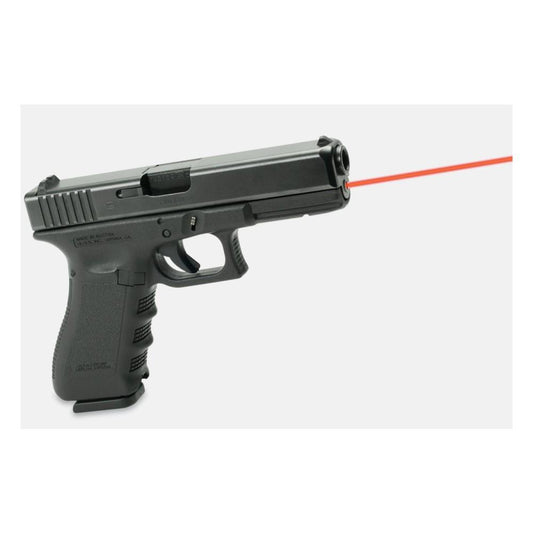

LaserMax Laser Sight for Glock 17 IR Guide Rod Laser - Infrared provides enhanced precision for your shooting experience. This laser sight easily converts your Glock 17, 22, 31, or 37 into a reliable tool for fast target acquisition. With its infrared technology, it ensures that you can identify targets with confidence in low-light situations, making it ideal for both tactical and outdoor use. The robust construction and user-friendly design enhance functionality without compromising your shooting performance.
Installation is straightforward, requiring no special tools or gunsmithing. Made from durable aircraft-grade aluminum, this laser sight is built to withstand rigorous environments. The ambidextrous ON/OFF switch allows for safe operation, while its compact design ensures it won't interfere with your grip or holster. Each unit undergoes rigorous testing to guarantee alignment and accuracy, providing you with the peace of mind that your shots will land precisely where intended.
Key Features:
- USER-FRIENDLY INSTALLATION - Easily replace your factory guide rod without any special tools or gunsmithing.
- SUPERIOR DURABILITY - Constructed from aircraft-grade aluminum for a lightweight yet robust design.
- ENHANCED VISIBILITY - High-intensity infrared laser for improved target identification in low-light conditions.
- MAXIMUM ACCURACY - Proximity to the bore ensures your point of aim matches your point of impact.
- AMBIIDEXTROUS DESIGN - Convenient ON/OFF switch allows for safe handling, suitable for both right and left-handed users.
- NO IMPACT ON GRIP - Internal design does not interfere with your grip or holster selection, providing an ergonomic solution.
- GUARANTEED ALIGNMENT - Each unit is rigorously tested for precision, ensuring your shots land where intended.
- VERSATILE OPTIONS - Available in infrared, green, and red laser options to suit your preference and usage scenario.
Technical Specifications Table
| Specifications | Details |
|---|---|
| Compatibility | Glock 17, 22, 31, 37 |
| Laser Type | Infrared |
| Weight | 2.5 oz |
| Material | Aircraft-grade aluminum |
| Dimensions | 3.5" x 1.5" x 0.5" |
What’s in the Box?
- LaserMax Laser Sight for Glock 17 IR Guide Rod Laser
- User manual
- Installation tools (if needed)
Customer Reviews
"Installation was a breeze and the accuracy is impressive!" - John D.
"Perfect for low-light conditions; my target acquisition is faster than ever." - Sarah M.
FAQ
How does the LaserMax Laser Sight compare to other laser sights?
The LaserMax Laser Sight for Glock 17 IR Guide Rod Laser - Infrared offers superior visibility and accuracy thanks to its proximity to the bore. Many users appreciate the ease of installation and the durability of the materials.
Is the infrared laser visible in daylight?
Infrared lasers are best used in low-light conditions and are not visible to the naked eye in daylight, which makes them an excellent choice for tactical applications.
Similar Models
Explore our complete collection of LaserMax products, including the LaserMax Green Laser Sight for enhanced daytime visibility and the LaserMax Guide Rod Laser for other Glock models. Discover the perfect laser sight tailored to your shooting needs.
You May Also Like
Here’s some of our most similar products people are buying. Click to discover trending style.






